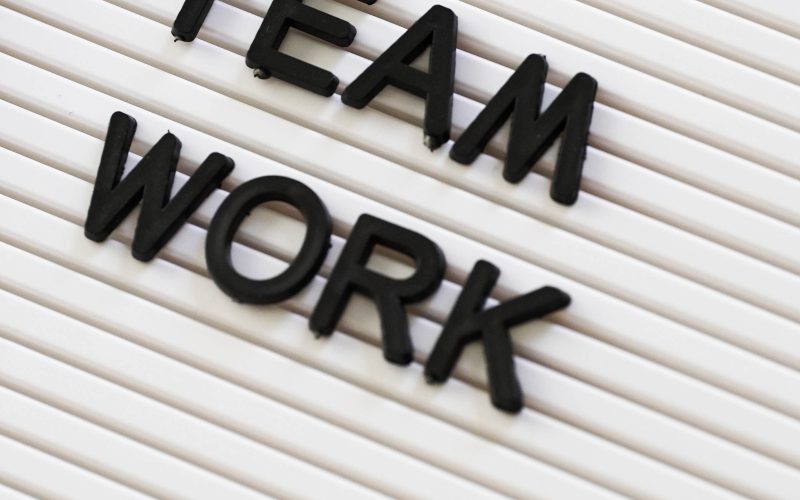Are you tired of feeling like you’re carrying the weight of the world on your shoulders? Do you ever wish that someone could swoop in and help take some of the load off? Well, guess what – they can! The power of teams and effective collaboration is undeniable. Whether you’re working on a project at work or trying to achieve a personal goal, joining forces with others can make all the difference. In this blog post, we’ll explore why working together works wonders and how you can unlock the true potential of teams through effective collaboration. So, let’s dive in!
The Purpose of Teams
The purpose of teams is to bring together individuals with different skill sets, backgrounds and experiences to achieve a common goal. In most cases, the tasks at hand are too complex or extensive for one person to handle alone. By working in a team, individuals can share knowledge and expertise that they may not have on their own.
Teams also provide support and motivation for each member. When one team member is struggling, others can step up and offer assistance. This helps foster a sense of camaraderie and encourages everyone to do their best work.
Another important aspect of teams is accountability. When you’re part of a team, you’re not just responsible for your own work – you’re also accountable to the rest of the group. This ensures that everyone stays on track and pulls their weight.
Teams allow for creativity and brainstorming sessions that can lead to innovative solutions or ideas that an individual might not have thought about before joining forces with others. The collaborative environment allows all members’ voices to be heard equally which leads to better results overall.
The Different Types of Teams
Teams are formed to achieve a common goal or objective, but not all teams function in the same way. There are different types of teams that serve different purposes and operate under various structures.
Project Teams are formed for a specific project with an end date. The team members work together to complete the project before the deadline. In contrast, Cross-Functional Teams bring individuals from different departments with diverse skills and knowledge to solve a particular problem or issue within an organization.
Virtual Teams consist of members who collaborate remotely through technology such as video conferencing and sharing platforms. They often have members spread out geographically and may work across multiple time zones.
Self-Directed Work Teams empower employees by allowing them to manage their tasks independently without constant supervision from managers. These teams require trust among team members, effective communication channels, and clear guidelines on roles and responsibilities.
Social Support Groups provide emotional support for their members during challenging times like grief or addiction recovery programs where group therapy is involved.
Each type of team has its unique characteristics, strengths, weaknesses which make it suitable for specific projects within organizations depending on their needs at any given point in time.
The Benefits of Effective Collaboration
Effective collaboration is essential in achieving success within a team. When team members work together, they can achieve goals that would be impossible to reach alone. One of the main benefits of effective collaboration is increased productivity. When people collaborate effectively, tasks are completed more quickly and efficiently.
Another benefit is improved communication between team members. Collaboration allows individuals to share ideas openly and receive feedback from others, leading to better decision-making and problem-solving skills. This also promotes creativity as different perspectives are considered.
Moreover, effective collaboration leads to a stronger sense of ownership among the team members towards their common goal which results in higher morale and motivation levels. The feeling of being part of something bigger gives each member a sense of purpose while making them feel valued.
Effective collaboration also helps build trust among team members as everyone works towards the same objective with transparency which creates an environment where conflicts are resolved quicker resulting in lesser friction points.
In summary, when done right, effective collaboration provides numerous benefits for teams such as increased productivity, improved communication and decision making skills, promotion of creativity among other things ultimately helping them achieve their objectives faster by working smarter not harder!
How to Start a Team
Starting a team can be an exciting process, but it also requires careful planning and consideration. Before diving in, it’s important to identify the purpose of your team and what specific goals you hope to achieve. Once you have established these key elements, here are some steps you can follow to start building your team:
Firstly, identify potential members who share similar interests and skills that align with the objectives of your group. This could include colleagues from work or classmates from school.
Next, establish clear roles and responsibilities for each member based on their strengths and expertise. This will help ensure everyone is working towards a common goal while utilizing their unique abilities.
It’s also essential to set guidelines on how the team will communicate and collaborate effectively. This includes establishing regular meeting times, communication channels (such as email or messaging apps), and outlining expectations for participation.
Make sure everyone is committed to the project’s success by setting realistic deadlines for deliverables while creating an environment that encourages open feedback among all members.
By following these simple steps when starting a new team, you’ll be well on your way towards unlocking its full potential through effective collaboration!
The Process of Building a Team
Building a team is not just about gathering people together and assigning them tasks. It’s about creating an environment where everyone can work seamlessly with each other towards a common goal.
The first step in building a team is defining the purpose of the team. What are the goals that you want to achieve? Once you have clarity on your objectives, it will be easier to determine who should join your team.
Next, identify the skills and expertise needed for your project or initiative. Look for individuals whose abilities complement each other so that they can collaborate effectively.
Once you’ve assembled your core group of individuals, establish clear roles and responsibilities. Each member should understand their contribution to the overall success of the team.
Effective communication is critical when building a strong team. Encourage open dialogue among members, listen actively and constructively provide feedback to ensure everyone stays on track.
Create an environment that fosters collaboration through trust-building activities like bonding events or regular check-ins to ensure members feel valued as part of the group.
Building a successful team takes time but once done correctly; it unlocks unparalleled productivity yielding excellent results!
Conclusion
Effective collaboration and teamwork are crucial in achieving success, regardless of the industry or field. Teams have a purpose, and each type of team serves a different function but all share the same goal: to work together towards achieving their objectives.
Collaboration among team members can unlock many benefits such as improved productivity, better decision-making capabilities, enhanced creativity and innovation, increased job satisfaction for employees, and higher profitability for companies.
Starting a team requires identifying the goals you want to achieve through teamwork. Building a successful team involves selecting individuals with complementary skills sets who can work well together while also creating an environment that fosters effective communication and productive collaboration.
Unlocking the power of teams through effective collaboration is not easy but it is worth it. With clear goals set out from the beginning of forming your team combined with continuous learning opportunities while building trust among teammates will lead to greater chances for success. Remember that working together works wonders!












